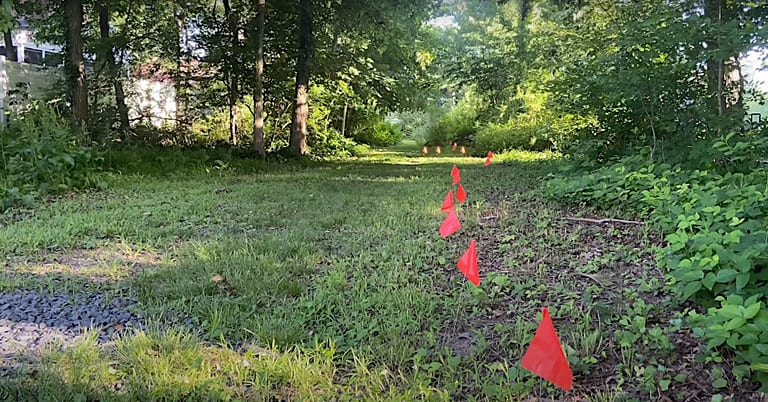How to Remove Scratches From Glass Top Stove
Got scratches on your glass stove top? Don’t worry, you can easily buff them out with some household items! Start by cleaning the surface thoroughly, then try a baking soda paste.
Mix 2 teaspoons of baking soda with 1 teaspoon of water, apply it to the scratch, and rub in circular motions. White toothpaste with baking soda can work wonders for tougher scratches. Remember to always use soft cloths or sponges to avoid creating new scratches.
If these methods don’t work, commercial scratch removers like Cerium Oxide might be your best bet. With a little elbow grease and the right technique, your stovetop will be gleaming in no time!
TLDR
- Use a baking soda paste, applying it in circular motions to remove minor scratches effectively.
- Apply white toothpaste with baking soda to scratches, buffing with a microfiber cloth in circular motions.
- For varying scratch severities, use commercial scratch remover products like Cerium Oxide or Weiman cooktop cleaner.
- For deep scratches, consider using a glass filler kit or two-part epoxy after cleaning with denatured alcohol.
- Seek professional repair services for extensive damage, as experts have specialized tools and compounds for restoration.
Understanding Glass Stove Top Scratches

Scratches on glass stove tops are more than just cosmetic blemishes. Small nuisances can make your cooking surface look worn and tired.
To prevent these scratches from becoming a recurring issue, it’s essential to understand proper cleaning methods and avoid using abrasive materials or harsh chemicals that can damage the surface.
But don’t fret! Understanding the types of scratches on glass is key to tackling them. Minor scratches from abrasive cleaners are often fixable at home, while deep scratches might need a pro’s touch.
Regular maintenance is your best friend here, folks – it’ll keep those scratches at bay! Controlling moisture and humidity is essential for longevity.
Assessing Scratch Severity
Let’s start by figuring out how deep those pesky scratches on your glass stovetop really are!
It’s important to assess the severity of the scratches, as deeper ones may require different approaches to repair. Run your fingernail gently over the scratch to see if it catches—if it does, you’re dealing with a deeper scratch that might need some extra TLC.
Once you’ve determined the depth, you can decide whether it’s a quick DIY fix or if you’ll need to call in the pros. Don’t worry—we’ll walk you through your options!
Additionally, understanding the maintenance of your appliances can help prevent future scratches, so be sure to check for any common causes of cloudy water that may affect your kitchen.
Identifying Scratch Depth
The depth of a scratch on your glass-top stove can determine the appropriate repair method.
You’ll want to get up close and personal with that pesky scratch! Run your fingernail gently over it – if it catches, you’re dealing with a deeper issue that might need professional help.
But don’t worry! Minor scratches are often surface-level and can be fixed with DIY magic. Ready to become a scratch detective?
Surface vs. Deep Scratches
Surface scratches and deep scratches on your glass top stove are worlds apart regarding repair difficulty and potential consequences.
While surface scratches often don’t affect functionality and can be fixed with DIY methods, deep scratches might require professional repair.
To assess scratch severity, run your fingernail over it. Catches? That’s likely a deep scratch! Regular inspections help catch issues early, so you can tackle them before they worsen.
Evaluating Repair Options
Carefully evaluating the severity of scratches on your glass top stove is essential before deciding on repair options.
Use your fingernail to assess the scratch depth – if it catches, you might need professional help. Minor surface scratches? You can tackle those yourself!
But don’t ignore deeper ones; they can compromise your stove’s integrity. Remember, location matters, too. Is it in a high-use area? Consider that when assessing your repair choices!
Gathering Necessary Repair Materials
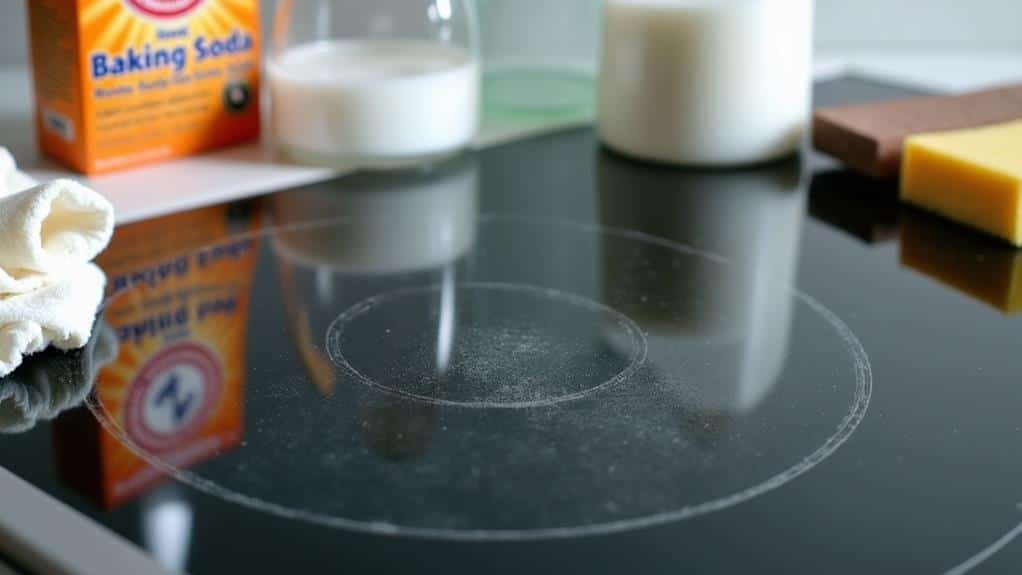
You’ll need to gather essential supplies and tools to fix those pesky scratches on your glass-top stove. First, ensure you have baking soda, white vinegar, a soft sponge or cloth, and a lint-free cloth for cleaning and polishing.
Regular maintenance preserves the appearance of your appliances, so it’s a good practice to keep these materials handy.
If you’re dealing with tougher scratches, you might also want a razor blade, but remember to use it carefully to avoid worsening the problem!
Essential Cleaning Supplies
Preparation is key when tackling glass stovetop scratches.
- You’ll need baking soda, a microfiber cloth, and white toothpaste for scratch treatment.
- Don’t forget cleaning solutions specifically for glass surfaces – they’re essential!
- Grab some soft sponges and white vinegar to create a paste that’ll work wonders.
- Oh, and here’s a pro tip: if you’ve got tough spots, a razor blade might come in handy.
Just be careful not to cause more scratches!
Scratch Repair Tools
Several key tools are essential for repairing scratches on your glass top stove.
You’ll need baking soda to whip up a paste, and don’t forget a clean cloth for application!
Got tougher scratches? No worries! Specialized polishing compounds are your best friends.
Remember, lint-free cloths are vital to avoid creating new scratches while you polish into the cooktop.
With these tools, you’ll have those scratches on glass stove disappearing in no time!
Cleaning the Stove Surface
Proper cleaning of your glass top stove’s surface is essential for maintaining its appearance and functionality.
Before you start, make sure the surface is cool to the touch. Regular maintenance can also help prevent stubborn stains from accumulating, like keeping your laundry area free of odors caused by mold and mildew common laundry room issues.
Grab a soft cloth or sponge and gently wipe away any food particles. For stubborn stains, whip up a paste using baking soda and water. Apply it in circular motions, and you’ll be amazed at how it tackles those pesky marks on your glass cooktop!
Baking Soda Paste Method
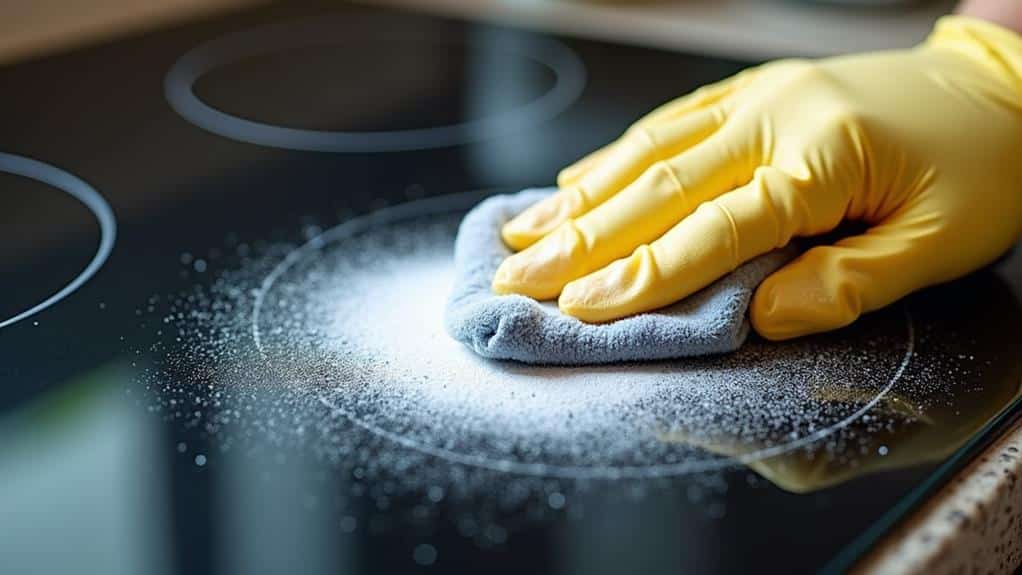
Now that you’ve cleaned your glass top stove, it’s time to tackle those pesky scratches.
Mix 2 teaspoons of baking soda with 1 teaspoon of water to create a paste. Apply this magical concoction to the scratched area and rub in a circular motion.
Trust me, it’s like giving your stove a mini spa treatment! Once you’re done, rinse thoroughly and voila! Your stove will be gleaming like new.
Toothpaste Scratch Removal Technique
Incredibly, toothpaste isn’t just for your pearly whites—it’s also a secret weapon for removing scratches from your glass-top stove.
Ready to try it? First, make sure your stove is clean and cool. Then, grab a white toothpaste with baking soda, not gel, and apply a small drop right on the scratch.
Here’s the fun part: buff it in circles with a microfiber cloth. You’re polishing like a pro!
Commercial Scratch Remover Products
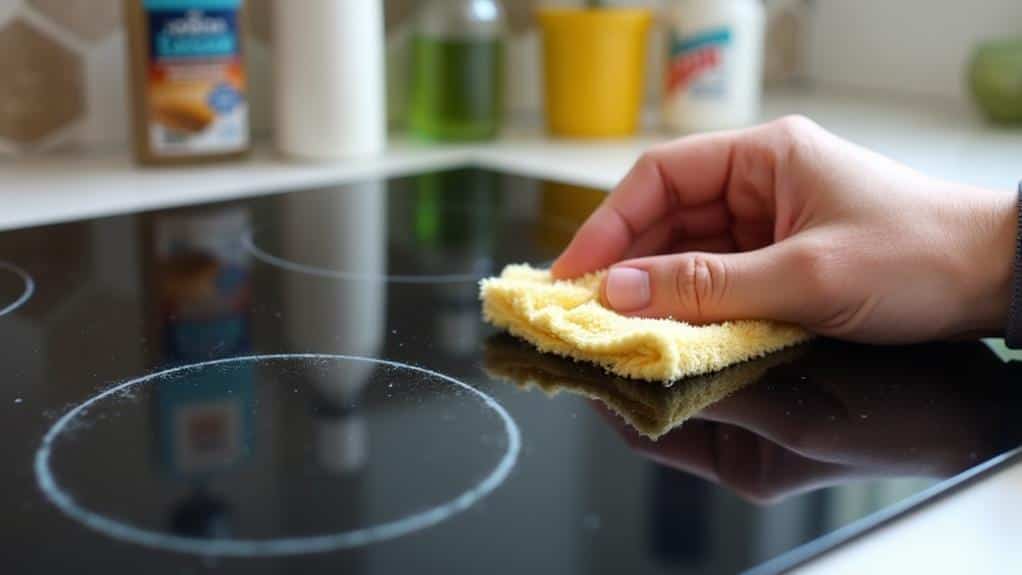
Let’s investigate some top-rated commercial scratch remover products that can work wonders on your glass stovetop!
There are various options available, each with a unique formula and application method, so it’s important to compare their effectiveness and ease of use.
Top-Rated Scratch Remover Options
Several commercial scratch remover products are specifically designed to tackle scratches on glass stovetops.
These astonishing polishing compounds can work wonders to restore shine and reduce scratch visibility! You’ll find top-rated options like Cerium Oxide and Weiman cooktop cleaner that’ll make your stovetop sparkle.
Want to know the best part? Many of these commercial products come with easy-to-follow instructions, so you can say goodbye to those pesky scratches in no time!
Application and Effectiveness Comparison
Commercial scratch removers offer a range of application methods and varying levels of effectiveness.
Unlike DIY solutions like baking soda, these products often contain powerful polishing compounds, like cerium oxide, that work wonders on minor scratches.
While they’re generally more effective than homemade remedies, deeper scratches might need multiple applications.
Have you tried one yet? Remember, results can vary, so don’t get discouraged if your stove doesn’t sparkle like new on your first attempt!
Buffing With Cerium Oxide
Buffing with cerium oxide is an effective method for removing scratches from your glass top stove.
- Mix this incredible polishing compound with water to create a slurry, and you’re ready to go!
- Gently apply it to those pesky scratches using a soft cloth or felt pad, moving in circles.
- Keep it moist while you work, and you’ll see those imperfections disappear like magic!
- Don’t forget to clean up with a microfiber cloth afterward.
Deep Scratch Repair Techniques
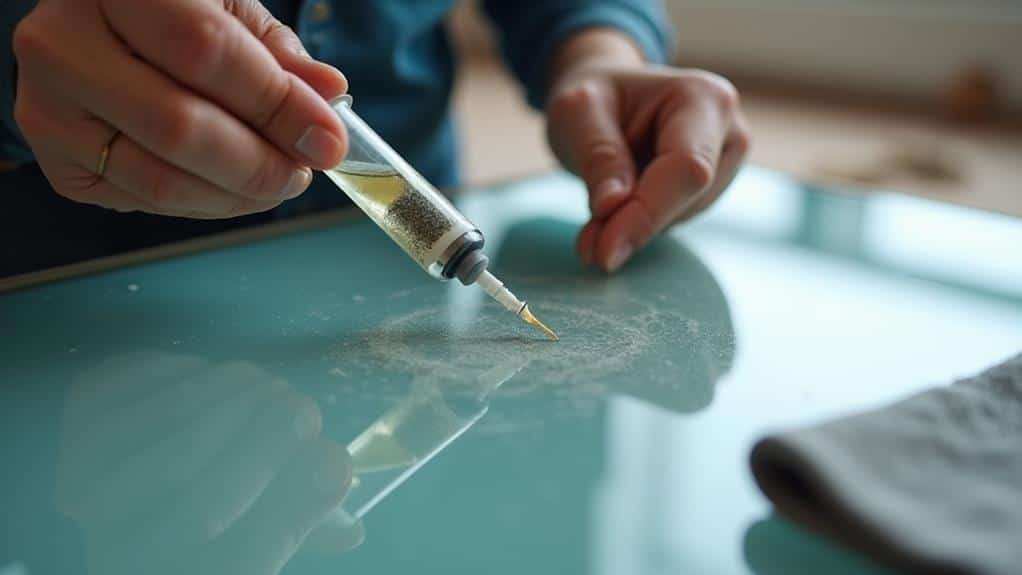
Tackling deep scratches on your glass top stove requires a different approach than minor surface abrasions.
Have you ever tried a glass filler kit? It’s like magic for those pesky deep scratches! First, clean the area with denatured alcohol, then apply the filler or a two-part epoxy.
If you’re feeling adventurous, try a polishing compound like cerium oxide. But remember, always follow the manufacturer’s instructions!
For severe damage, don’t hesitate to call in the pros.
Professional Repair Options
When scratches on your glass-top stove prove too challenging for DIY solutions, it’s time to consider professional repair options.
Did you know that professional repair services for glass stove tops typically cost between $100 and $300? These experts use specialized tools and polishing compounds to restore your cooktop’s shine.
For deep scratches or cracks, they’ll assess if a replacement cooktop is necessary. Don’t worry, though – they’ll help you steer through the repair cost and process!
Preventing Future Scratches
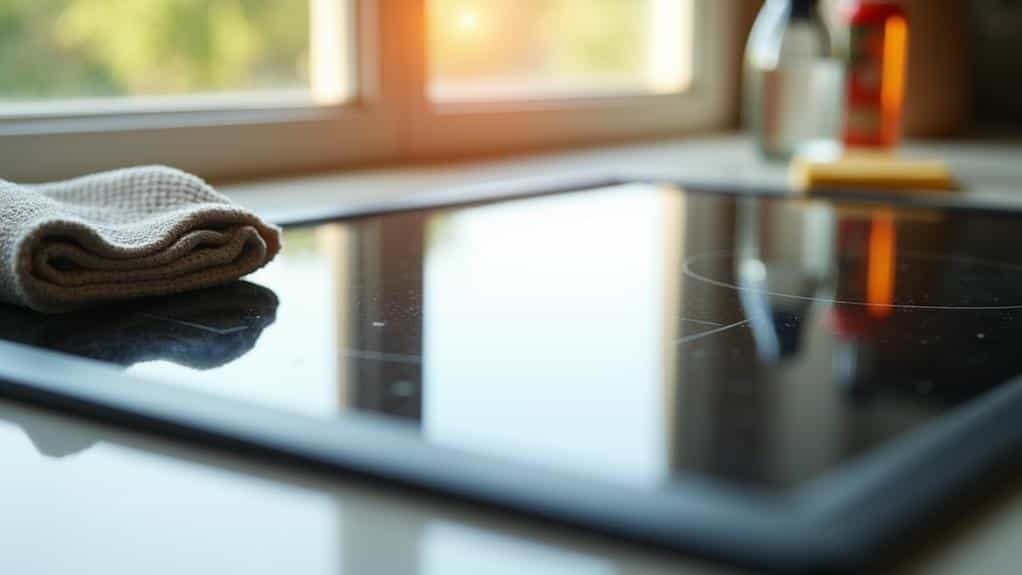
While professional repair can restore your glass cooktop to its pristine condition, it’s best to prevent scratches from occurring in the first place.
You’ll want to be careful with your cookware choices – opt for flat-bottomed pots and pans that won’t scratch the surface. Remember to lift, not drag!
And don’t forget about your utensils; silicone or wooden ones are your best friends. Always clean up spills quickly to avoid any potential damage. Trust me, your stove will thank you!
Proper Cookware for Glass Tops
Choosing the right cookware is essential for maintaining your glass-top stove’s pristine condition.
You’ll want to use proper cookware for glass tops to minimize the risk of scratches. Opt for stainless steel or enameled cast iron with smooth bottoms.
Avoid textured non-stick pans and traditional cast iron. Always check for rough edges before cooking, and remember: properly lifting pots and pans is key! Your glass top will thank you for the extra care.
Maintenance Tips for Longevity

Now that you’ve selected the right cookware, let’s focus on maintaining your glass top stove for years to come.
To remove scratches from glass and keep your stove looking fantastic, use gentle cooktop cleaners and avoid abrasive materials at all costs.
Stick to cookware with flat bottoms, and always lift, never drag! Regular inspection is key – catch those pesky scratches early, and you’ll be cooking up a storm on a scratch-free surface in no time!
Overall
You’ve got this! With these tips and tricks, you’ll be able to tackle those pesky scratches on your glass stovetop like a pro. Prevention is key, so be gentle with your cookware and clean up spills promptly. If you’re ever in doubt, don’t hesitate to call in the experts.
Your stovetop is an essential part of your kitchen, and with proper care, it’ll keep shining for years. Happy cooking, and may your glass top always gleam!



